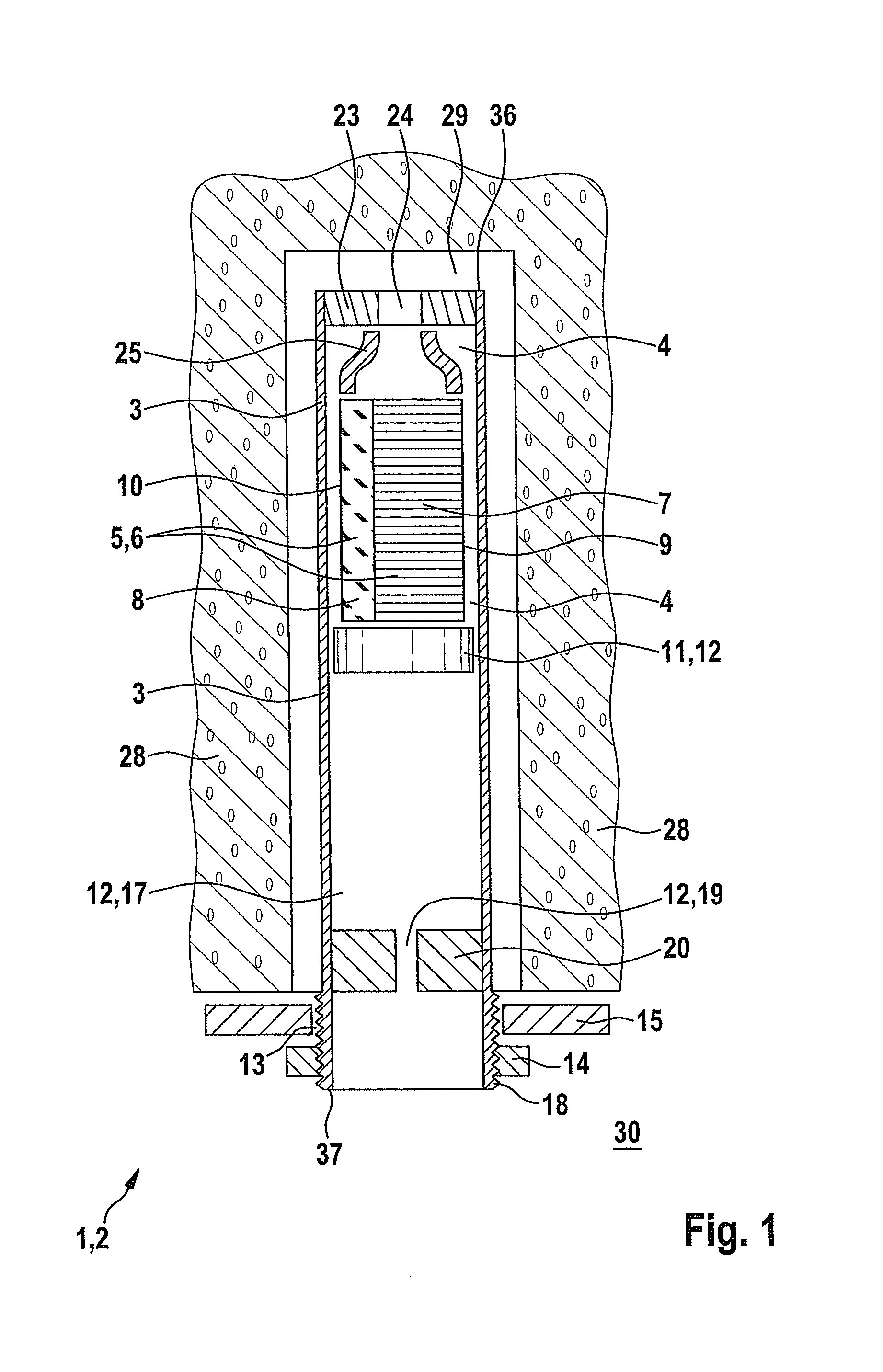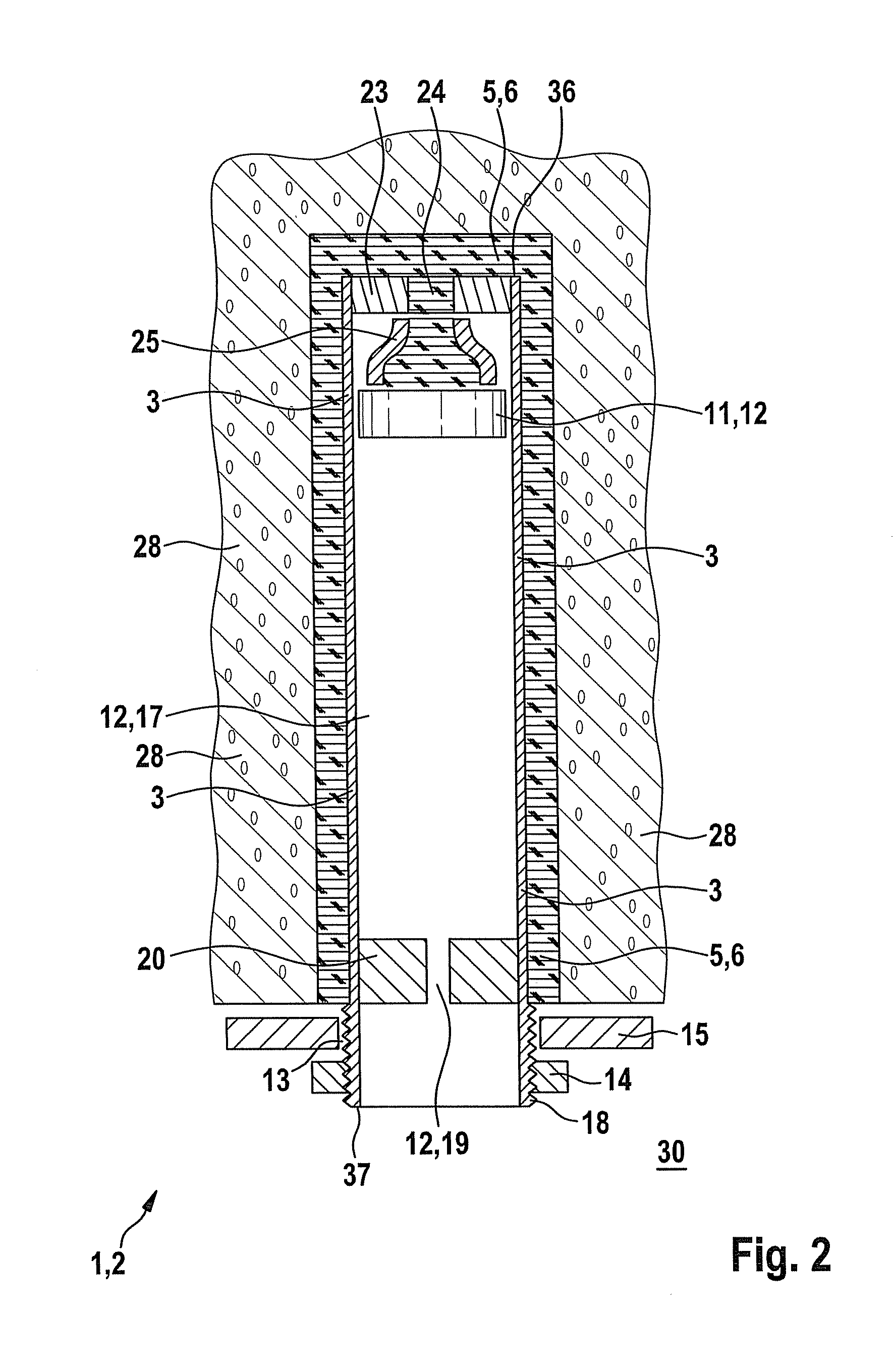Rock Bolt
a technology of rock bolts and axial conduits, applied in the field of rock bolts, can solve the problems of large fraction of rock bolts having axial conduits made of fiberglass reinforced plastic damaged and/or destroyed, and cannot be removed from coal, etc., to achieve the effect of reducing the size of the excavated pi
- Summary
- Abstract
- Description
- Claims
- Application Information
AI Technical Summary
Benefits of technology
Problems solved by technology
Method used
Image
Examples
first embodiment
[0042]In FIGS. 4 to 8, different embodiments of the connection of the components 26, 27 are illustrated. In the first embodiment, according to FIG. 4, a plastic sheath 31 is applied by using injection molding to both the components 26 made of metal and the components 27 made of plastic. In this way, both components 26, 27 are connected to each other.
second embodiment
[0043]In the second embodiment, according to FIG. 5, fibers of the fiberglass reinforced plastic of the components 27 are applied to the outside of the components 26 made of metal. These fibers in this case are saturated with a matrix material, for example an artificial resin, and then cured. In this way, it is possible to produce a load-bearing connection to the component 26 made of metal, i.e. a steel component.
[0044]In this case, these fibers 32 are laid out as both longitudinal fibers and cross fibers.
third embodiment
[0045]In FIG. 6, the connection between the components 26, 27 is illustrated. The inner diameter of one component 26 corresponds in this case substantially to an outer diameter of another component 27. Thus the inner and outer diameters in this case substantially comprise a difference of less than 10%, 5%, 2% or 1%. In this way, the component 27 as a plastic part can be inserted coaxially into the component 26 as a steel part. By using adhesive bonding 33, both a material connection and a positive-fit connection can be produced between the components 26, 27.
PUM
 Login to View More
Login to View More Abstract
Description
Claims
Application Information
 Login to View More
Login to View More - R&D
- Intellectual Property
- Life Sciences
- Materials
- Tech Scout
- Unparalleled Data Quality
- Higher Quality Content
- 60% Fewer Hallucinations
Browse by: Latest US Patents, China's latest patents, Technical Efficacy Thesaurus, Application Domain, Technology Topic, Popular Technical Reports.
© 2025 PatSnap. All rights reserved.Legal|Privacy policy|Modern Slavery Act Transparency Statement|Sitemap|About US| Contact US: help@patsnap.com



